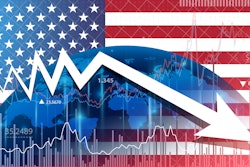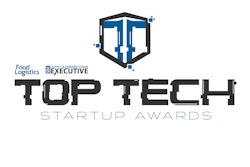
As we look forward to 2023, the food and beverage industry will explore new avenues for products, sourcing and technology to become better equipped for the unexpected. The industry has been greatly affected by consumer preferences in the last decade, which has catalyzed and pushed businesses to innovate quickly. Food and beverage organizations will further lean on cloud-based solutions to get to the next level in 2023 and scale their businesses to meet consumer demand while addressing the pressures of supply chain instability and climate change.
Anticipated trends and predictions that food and beverage organizations should consider in 2023 include:
1. Supply chain agility and cost. Disruption is the New Normal. An unpredictable future is the only certainty for the global supply chain. Coupled with the inflation of commodity prices and other external factors such as geopolitical tensions, the food and beverage supply chain needs agility in planning to spot issues sooner and meet demand. Food manufacturers need to be agile and plan for the unexpected with frequent changes in demand and supply and keep a close eye on its impact on production. Food and beverage businesses will diversify their raw material and supplier options further in 2023 to make up for supply disruptions. Organizations will need to meet demand as accurately as possible to ensure smooth operations and optimize production.
2. Manufacturing automation. Undoubtedly, the global labor shortage has become a post-pandemic issue affecting the output of the food and beverage industry. The new generation of workers is not looking for life-long employment and is interested in careers that align with their values. Given the pressure to maintain supply with heightened demand, food and beverage organizations will need to invest in Industry 4.0 technologies to make up for the lack of employees. An example is using image recognition with machine learning (ML) so robots can automate labor-intensive tasks that previously required human eyes and decisions, such as in sorting, grading, cutting and slicing. Food and beverage organizations that embrace these new technologies sooner will likely become the future leaders in the space.
3. Rise of artificial intelligence and ML. Artificial intelligence (AI) and ML solutions will be more heavily adopted for businesses in the cloud. For example, a dairy company implemented a ML model that optimizes the yield and minimizes waste in cheese making. In the past, the company could only analyze production output and a few contributing parameters such as protein, butterfat and temperature looking backwards, which was too late to improve the yield. Today, the dairy producer can adjust the process continuously, considering many more contributing parameters. A 1% improvement in yield already equals $500,000 of cost savings. Expect more smart cost-saving use cases being implemented next year.
4. Accelerated food innovation. Swapping out ingredients, sourcing from alternative suppliers and decreasing pack sizes because of shortages and price increases will be a top trend. Besides that, true food innovation is becoming the new norm. Many startups in alternative proteins, lab-grown meats or synthetic dairy will be scaling up rapidly thanks to consumer adoption and the willingness of large food companies to invest in these innovations. There is also accelerated speed of product innovation to respond to consumers request, introduce different packaging sizes, to swap ingredients, or to source from alternative suppliers.
5. Consumer transparency. Consumers are looking to learn more about the product, e.g., where is it from, are farmers and animals treated well, environmental impact, what are the functional benefits, etc. There is an ask from consumers but also an opportunity for food and beverage processers to tell their story with smart packaging showing traceability, freshness, etc., but also to connect and interact with the consumer in a digital way. There is a wealth of data that can be collected and analyzed, and then be used in improving existing products and/or for new product innovation.
6. Sustainability. As climate change becomes a more imminent threat, the food and beverage industry will undoubtedly be affected. Organizations will need to consider alternative local sourcing for products and lean into machine learning for energy, water and food waste reduction. Within manufacturing, businesses primarily reduce waste (water, energy, food), as well as extending up and downstream the supply chain, e.g., farming practices, certifications, transportation. It’s important to evaluate suppliers based on total carbon footprint, i.e., within manufacturing and in transportation. Sourcing locally is not only about supporting the community but also reducing the larger carbon footprint. For businesses to be more sustainable with packaging, the use of more environmentally friendly, reusable or even edible options can reduce waste and a carbon footprint. Full supply chain transparency will continue to be top of mind, as governmental and public pressures push organizations to share their progress on sustainability.

















